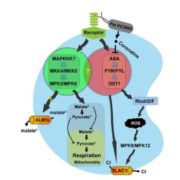
Stomatal immunity: Roles of MAP kinases and cytokinin
Plant Science Research Weekly, Research0 Comments
/
When a pathogen is perceived, plants have the ability to induce stomatal closure to prohibit the pathogens from passing into the inner tissues; this response is known as stomatal immunity. Two new papers in The Plant Cell investigate mechanisms by which pathogen perception is transduced into stomatal…
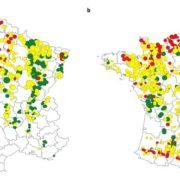
Reducing pesticide use while preserving crop productivity and profitability ($)
Plant Science Research Weekly, ResearchTo safeguard human health and the environment, the French government has called for a nation-wide reduction in the use of pesticides (herbicides, fungicides and insecticides). Towards this end, they have been collecting pesticide usage and yield data from French farmers. Lechenet et al. explored these…

What We’re Reading: March 10
Research, Research Blog
Review: The increasing impact of activity-based protein profiling in plant science
Activity-based protein profiling is a proteomics approach that involves covalently labeling reporter tags to subsets of proteins based on their active sites. Morimoto and van der Hoorn define different types of…
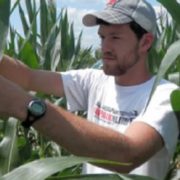
NSCU National Needs Fellowship Program open for applications
Funding Opportunities, ResearchNorth Carolina State University’s Colleges of Agriculture and Life Sciences, Engineering, and Sciences are recruiting outstanding students to pursue interdisciplinary PhDs as USDA-funded National Needs Fellows. We are targeting students from groups traditionally underrepresented in agricultural sciences…
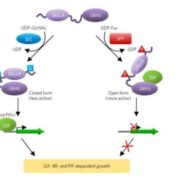
Arabidopsis O-fucosyltransferase SPINDLY activates growth repressor DELLA ($)
Plant Science Research Weekly, ResearchThe SPINDLY (SPY) gene was identified through a genetic screen; spy mutants are abnormally tall and thin, suggesting that they are overly sensitive to gibberellins. Later, the SPY gene was shown to act downstream of GIBBEERLLIN INSENSITIVE (GAI), which is a DELLA-domain containing protein. SPY was previously…
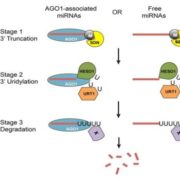
ARGONAUTE10 promotes degradation of miR165/6 through SDN1 and SDN2 exonucleases
Plant Science Research Weekly, ResearchARGONAUTE10 (AGO10) was first identified through genetic studies in the 90s; loss-of-function mutants (zwille, pinhead) show premature differentiation of the shoot apical meristem. Although the mechanism has remained uncertain, AGO10 has been shown to suppress accumulation of miR165/6, which are key…
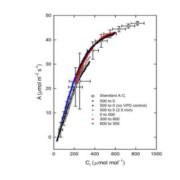
Technical Report: The rapid A–Ci response: photosynthesis in the phenomic era ($)
Plant Science Research Weekly, ResearchLarge-scale phenotyping efforts depend on large numbers of measurements, so the time taken for any one measurement has a big effect on the number of samples that can be processed. Stinziano et al. describe a breakthrough in the method used to identify the photosynthetic parameters Vc,max (maximum rate…
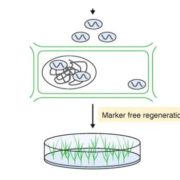
Research Highlight: Knocking out consumer concerns and regulator’s rules with CRISPR/Cas
Plant Science Research Weekly, ResearchWhen is a genome-edited plant a GMO (and subject to GMO-restrictions)? Wolter and Puchta summarize two important papers that show that CRISPR/Cas genome editing can be achieved in wheat and rice without the introduction of foreign DNA (making these plants “not GMO”), by delivering complexes of enzyme…

Review: The genomic basis of adaptation in plants ($)
Plant Science Research Weekly, ResearchEvolution starts with molecular variation and phenotypic diversity, upon which selection acts. Flood and Hancock review the approaches used to detect adaptive evolution. The top down approach starts with the phenotype and works to identify its genomic basis; examples are quantitative trait locus (QTL)…

